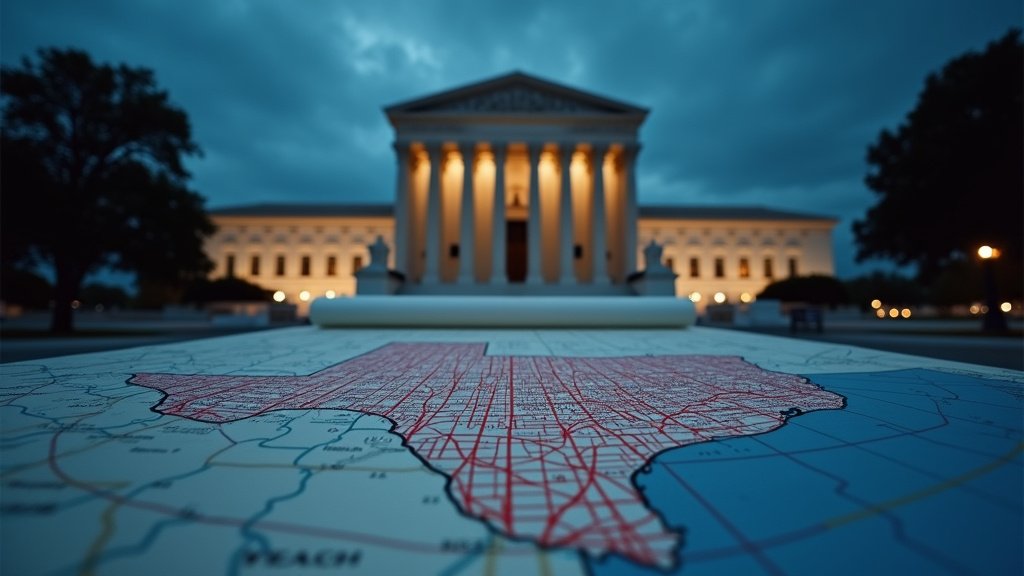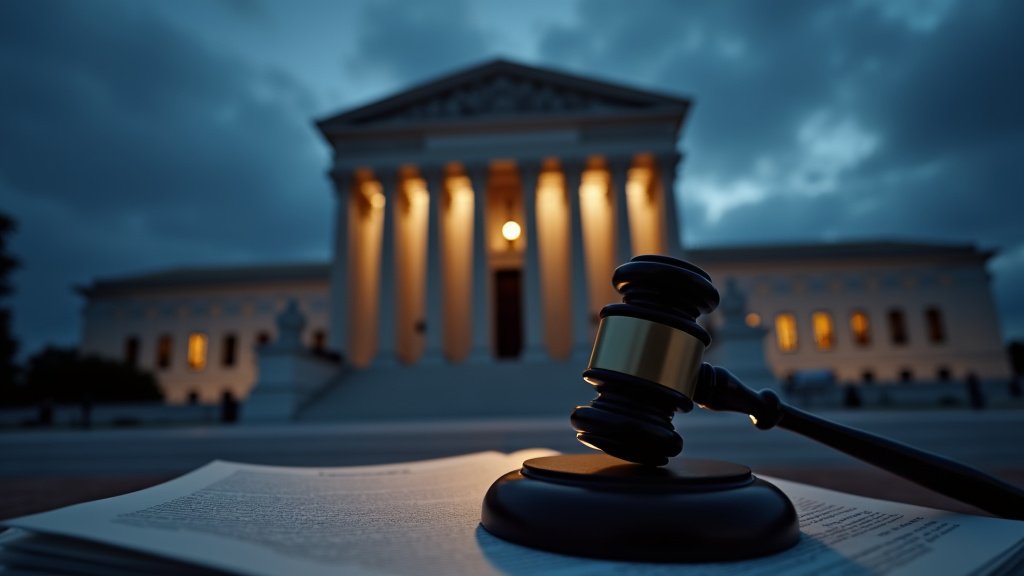A significant legal battle is set to shape the political landscape of Texas, as a federal court has temporarily blocked the state’s newly drawn congressional map from being used in the 2026 midterm elections. The U.S. District Court for the Western District of Texas ruled that the map, which was designed to create five additional Republican-leaning seats, amounts to illegal racial gerrymandering. This decision, celebrated by voting rights advocates and decried by state Republican leaders, has triggered an appeal to the U.S. Supreme Court and thrown the state’s election planning into immediate uncertainty. This is a top development in Texas news and a trending topic in national politics.
Court Blocks Texas Congressional Map Over Racial Gerrymandering Claims
A panel of three federal judges delivered a 2-1 ruling that halts the implementation of the map passed by the Republican-controlled Texas Legislature in August 2025. The majority opinion, authored by U.S. District Judge Jeffrey Brown (a Trump appointee) and joined by Judge David Guaderrama (an Obama appointee), found “substantial evidence” that race was the predominant factor in drawing the new districts, violating the Voting Rights Act of 1965 and the U.S. Constitution. Judge Jerry E. Smith, appointed by Ronald Reagan, filed a dissenting opinion.
The court’s central finding was that the redistricting effort went beyond mere partisan advantage, which is legally permissible. Instead, the majority concluded that the legislature intentionally dismantled and redrew districts based on racial demographics, particularly targeting “coalition districts” – those where minority voters collectively form a majority but no single racial group does. Judge Brown wrote that “it was much more than just politics. Substantial evidence shows that Texas racially gerrymandered the 2025 Map”.
As a remedy, the court issued a preliminary injunction, ordering Texas to revert to its 2021 congressional map for the 2026 elections. This means the upcoming midterms, which will determine control of the U.S. House of Representatives, will proceed under the lines previously used for the 2022 and 2024 elections, absent further court intervention.
Background: A Mid-Decade Redraw Amidst Political Pressure
The controversy stems from Texas’s decision to redraw its congressional map for a second time in a decade, a move often spurred by shifts in population or political advantage. This particular mid-decade redistricting effort was initiated following a letter from the U.S. Department of Justice (DOJ) in July 2025. The DOJ’s letter urged Texas to dismantle four specific congressional districts, asserting they unconstitutionally used race to dilute minority voting strength.
Governor Greg Abbott quickly added redistricting to a special legislative session agenda, citing the DOJ’s “constitutional concerns”. This action occurred amidst calls from then-President Donald Trump, who reportedly encouraged Republican lawmakers in multiple states to redraw their congressional maps to bolster the GOP’s chances in the upcoming elections.
While Republicans argued that the redistricting was solely for partisan advantage – a legal practice since a 2019 Supreme Court ruling – civil rights groups and Democratic lawmakers contended that the map’s primary effect was to disenfranchise Black and Hispanic voters. The map was designed to create five new Republican-leaning districts, a move that would have significantly altered the state’s congressional delegation. The number of congressional districts where minorities comprise a majority of voting-age citizens was decreased from 16 to 14 under the new map.
Plaintiffs’ Arguments and Court’s Findings
The lawsuit was brought by a coalition of civil rights organizations, including the Legal Defense Fund (LDF) and MALDEF (Mexican American Legal Defense and Educational Fund), representing Black and Hispanic voters. They argued that the new map deliberately diluted the voting power of minority communities, violating Section 2 of the Voting Rights Act and the Fourteenth Amendment.
In its ruling, the court found that Texas lawmakers did not draw the map “blind to race,” as some witnesses claimed. Instead, it highlighted evidence showing specific racial targets being met with “on-the-nose” precision, such as creating districts with exactly 50.3% Hispanic or 50.5% Black voting-age populations. The majority also rebuked the DOJ’s letter, calling it “legally unsound” and noting that it prompted Texas to consider race when it had previously claimed not to. The court concluded that race, not partisanship, was the predominant factor, making the map an unconstitutional racial gerrymander.
Texas Officials Vow Appeal: Partisan Intent vs. Racial Motivation
Texas Governor Greg Abbott and Attorney General Ken Paxton immediately vowed to appeal the ruling to the U.S. Supreme Court. Governor Abbott stated that the legislature redrew the maps “to better reflect Texans’ conservative voting preferences – and for no other reason,” calling claims of discrimination “absurd and unsupported”.
Attorney General Paxton echoed these sentiments, characterizing the ruling as an attempt by the “radical left” to undermine the will of the people and asserting that the “Big Beautiful Map was entirely legal and passed for partisan purposes”. Both officials expressed confidence in their chances before the conservative-leaning Supreme Court, arguing that Texas has a sovereign right to engage in partisan redistricting.
Voting rights groups, however, hailed the decision as a victory for democracy and fair representation. Thomas A. Saenz, MALDEF president and general counsel, stated that the legislature, “coerced improperly by the Trump administration,” disregarded the Voting Rights Act, which was “the very epitome of unconstitutional over-consideration of race”.
Implications for the 2026 Elections and Beyond
This ruling has immediate implications for the 2026 midterm elections, where control of the U.S. House is expected to be highly contested. The new map was designed to secure five additional seats for Republicans, potentially solidifying their narrow majority. The blocking of this map means that if the ruling stands, Republicans may not gain as significant an advantage in Texas as they had planned.
The decision also casts uncertainty on the election calendar. The candidate filing deadline for the 2026 elections is December 8, and candidates must now decide which districts they will run in under the older map. This situation is reminiscent of past redistricting battles in Texas that led to delays in primary elections.
Nationally, the Texas case is part of a broader trend of redistricting battles. Following Texas’s lead, states like Missouri and North Carolina also adopted new maps to benefit Republicans, while California voters approved Proposition 50 to create more Democratic-leaning districts. The legal challenges and appeals in these states underscore the contentious nature of redistricting in American politics.
What Happens Next: The Supreme Court’s Role
The case is now heading directly to the U.S. Supreme Court. Texas officials have filed an appeal, seeking an emergency stay to allow the new map to be used while the legal process unfolds. The Supreme Court’s decision will be pivotal, not only for Texas but potentially for voting rights doctrine nationwide.
Experts suggest the Supreme Court could either deny the stay, leaving the 2021 map in place for 2026, or grant the stay, allowing the challenged map to be used. The urgency is high due to the approaching candidate filing deadline. The Court’s ultimate ruling on the merits could redefine how race and partisanship are considered in the drawing of electoral maps, impacting the fairness and accessibility of elections for years to come.
This ongoing legal drama in Texas is a top story, highlighting the critical role of courts in safeguarding voting rights against claims of discriminatory map-making. The national attention it garners makes it a significant piece of trending political news.






